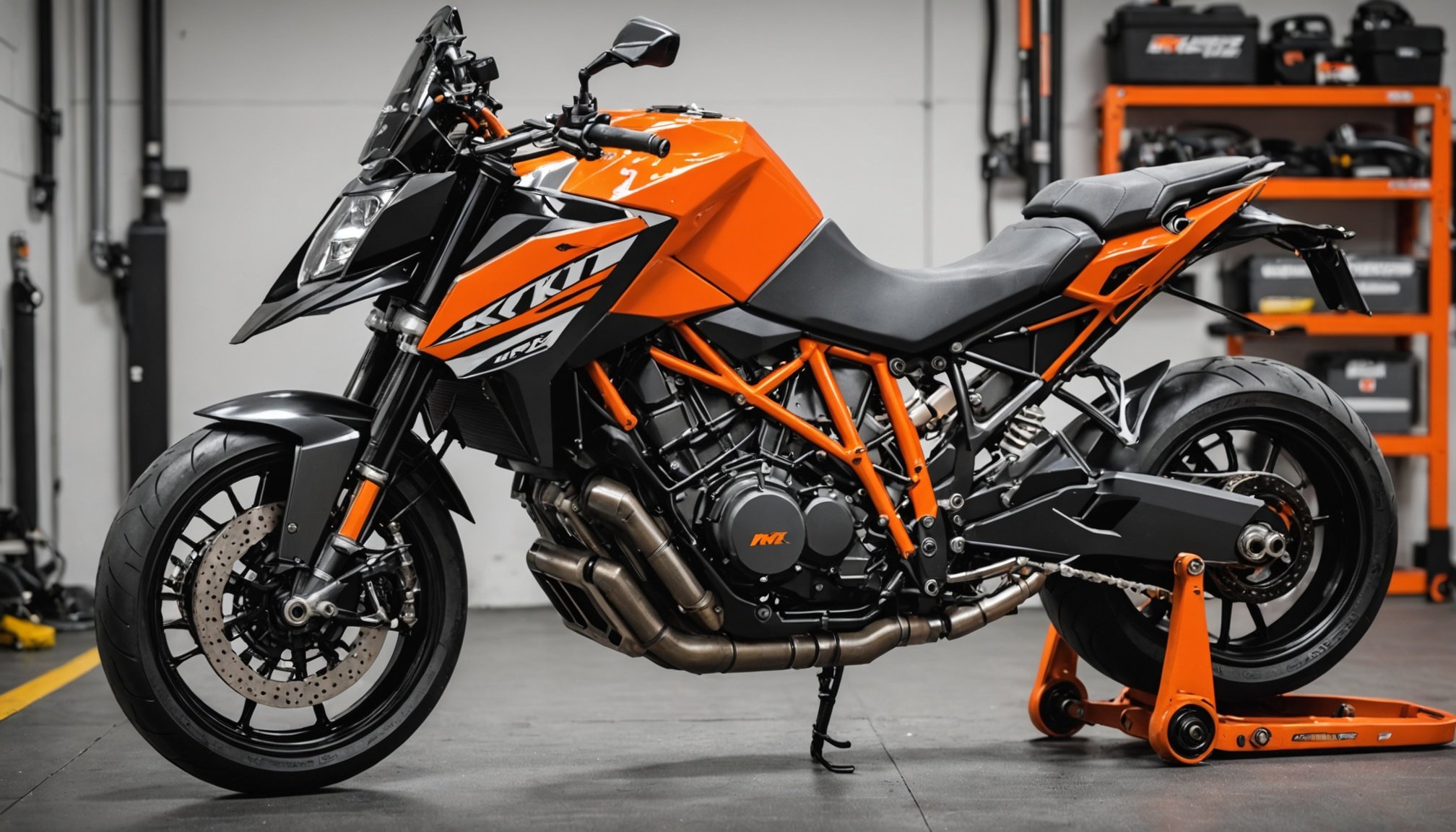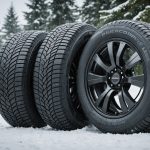Ultimate Guide to Detecting and Fixing Oil Leaks on Your KTM 1290 Super Duke GT
Understanding the Importance of Engine Oil
When it comes to your KTM 1290 Super Duke GT, the engine oil is the lifeblood of your motorcycle. It lubricates the engine, prevents overheating, and ensures that all the moving parts work smoothly. However, oil leaks can be a significant issue, leading to engine damage, decreased performance, and even safety hazards. Here’s why detecting and fixing oil leaks is crucial:
- Engine Protection: Oil leaks can cause the engine to overheat and seize, leading to costly repairs or even requiring a new engine.
- Performance: Low oil levels can affect the performance of your bike, making it harder to ride and potentially causing damage to other components.
- Safety: Riding a motorcycle with an oil leak can be dangerous, as it may lead to a loss of control or an accident.
Identifying the Signs of an Oil Leak
Before you can fix an oil leak, you need to identify it. Here are some common signs to look out for:
Additional reading : The definitive handbook for fitting aftermarket handlebars on your yamaha mt-10: achieve flawless comfort and control
Visual Inspection
- Oil Spots: Check the ground where you park your bike for oil spots or drips.
- Oil Stains: Look for oil stains on the engine, frame, and other components.
- Low Oil Level: Regularly check the oil level using the dipstick. If it’s consistently low, it might indicate a leak.
Performance Issues
- Increased Engine Noise: If the engine is making unusual noises, it could be a sign of low oil levels.
- Overheating: An overheating engine can be a result of insufficient oil lubrication.
- Clutch Slippage: If the hydraulic clutch feels spongy or slips more than usual, it might be due to low oil pressure.
Other Indicators
- Smell of Oil: If you notice the smell of oil while riding, it could indicate a leak.
- Warning Lights: Some modern motorcycles, including the KTM 1290 Super Duke GT, have oil level sensors that trigger warning lights on the dashboard.
Common Areas Where Oil Leaks Occur
Oil leaks can occur in various parts of your motorcycle. Here are some common areas to check:
Engine Gaskets and Seals
- Head Gasket: The head gasket is a common area for oil leaks. Look for signs of oil around the cylinder head.
- Valve Cover Gasket: Oil leaks often occur around the valve cover gaskets.
- Crankcase Gasket: The crankcase gasket seals the engine block and can be another source of leaks.
Oil Lines and Hoses
- Oil Lines: Inspect the oil lines for any signs of damage, cracks, or loose connections.
- Oil Filter: Ensure the oil filter is properly tightened and not damaged.
Other Components
- Clutch Cover: The clutch cover can leak oil, especially if the gasket is damaged.
- Engine Case: Cracks or damage to the engine case can also cause oil leaks.
Step-by-Step Guide to Fixing an Oil Leak
Fixing an oil leak requires patience and the right tools. Here’s a step-by-step guide to help you through the process:
Also to discover : Elevate your suzuki sv1000: an easy step-by-step guide to headlight bulb replacement using minimal tools!
Gather Necessary Tools and Materials
- New Gaskets or Seals: Depending on the source of the leak, you may need new gaskets or seals.
- Oil: Ensure you have enough engine oil to refill your bike after repairs.
- Tools: You will need a socket set, wrenches, and possibly a torque wrench.
- Cleaning Materials: Have some rags and cleaning solution handy to clean up any spills.
Locate the Leak
- Use a UV dye test kit if you’re having trouble locating the leak visually.
- Apply the dye to the oil and run the engine for a few minutes. Then, use a UV light to trace the leak.
Disassemble the Affected Area
- Follow the service manual for your KTM 1290 Super Duke GT to disassemble the components around the leak.
- Be careful not to damage any surrounding parts.
Replace the Gasket or Seal
- Remove the old gasket or seal and clean the area thoroughly.
- Apply a new gasket or seal, ensuring it is properly seated and aligned.
Reassemble the Components
- Reassemble the components in the reverse order of how you disassembled them.
- Ensure all bolts and screws are tightened to the specified torque.
Refill the Oil
- Refill the engine oil to the recommended level.
- Start the engine and check for any signs of leaks.
Preventive Maintenance to Avoid Oil Leaks
Preventive maintenance is key to avoiding oil leaks in the first place. Here are some tips:
Regular Oil Changes
- Change your engine oil regularly according to the manufacturer’s schedule.
- Use high-quality oil that meets the specifications for your KTM 1290 Super Duke GT.
Inspect Gaskets and Seals
- Regularly inspect the gaskets and seals for any signs of wear or damage.
- Replace them if necessary before they cause a leak.
Check Oil Lines and Hoses
- Inspect the oil lines and hoses for any damage or wear.
- Replace them if you find any issues.
Comparison of Oil Leak Detection Methods
Here is a comparison of different methods to detect oil leaks:
| Method | Description | Advantages | Disadvantages |
|---|---|---|---|
| Visual Inspection | Check for oil spots and stains visually. | Simple, no special tools needed. | May miss small leaks. |
| UV Dye Test | Use UV dye in the oil and a UV light to locate leaks. | Highly accurate, can locate small leaks. | Requires special equipment. |
| Oil Level Checks | Regularly check the oil level using the dipstick. | Easy to do, no special tools needed. | May not identify the source of the leak. |
| Performance Monitoring | Monitor the bike’s performance for signs of low oil levels. | Can identify issues early. | May not pinpoint the exact location of the leak. |
Practical Tips and Anecdotes
Here are some practical tips and anecdotes to help you in your journey:
Tip: Use the Right Tools
- “When working on your KTM 1290 Super Duke GT, it’s crucial to use the right tools to avoid damaging any components. For example, using a torque wrench ensures that bolts are tightened to the correct specification,” advises John, a seasoned mechanic.
Anecdote: A Personal Experience
- “I once had an oil leak on my KTM 1290 Super Duke GT that I couldn’t locate. I decided to use a UV dye test kit, and it revealed a small leak in the valve cover gasket. It was a simple fix, but it saved me from potential engine damage,” shares Mark, an avid rider.
Detecting and fixing oil leaks on your KTM 1290 Super Duke GT is a task that requires attention to detail and the right approach. By understanding the signs of an oil leak, knowing where to look, and following a step-by-step guide, you can ensure your motorcycle remains in top condition. Remember, preventive maintenance is key to avoiding these issues in the first place.
Additional Resources
For more detailed information and specific instructions, refer to the service manual for your KTM 1290 Super Duke GT. Here are some additional resources that might be helpful:
- KTM Service Manual: This is the most comprehensive resource for specific repair instructions and diagrams.
- Online Forums: Websites like KTM forums and motorcycle enthusiast groups can provide valuable insights and tips from other riders.
- Professional Mechanics: If you’re not comfortable with DIY repairs, consulting a professional mechanic who specializes in KTM motorcycles can be very beneficial.
By following this guide and staying proactive with maintenance, you can enjoy many miles of trouble-free riding on your KTM 1290 Super Duke GT. Happy riding











